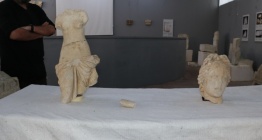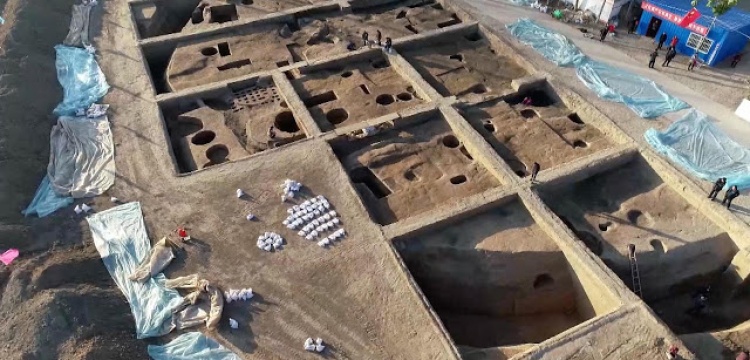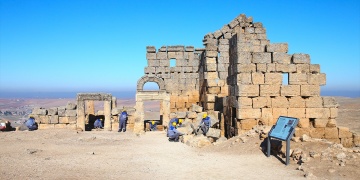According to an archaeological survey, the site covers 30,000 square metres with the main living area of 5,000 square metres surrounded with rammed earth walls.
Archaeologists have unearthed a number of circular foundations at a Neolithic site of Longshan Culture dating back about 4,000 years in Huaiyang, central China's Henan Province, and believe they are one of China's earliest granaries.
The Shizhuang Site was discovered when workers built a factory. According to an archaeological survey, the site covers 30,000 square metres with the main living area of 5,000 square metres surrounded with rammed earth walls. The ground bases of the granaries are located inside the ancient settlement. The Henan Provincial Institute of Cultural Relics and Archaeology began excavation of the site in July.
Cao Yanpeng, an associate researcher at the institute, said the Longshan Culture represents a gradual transition from a primitive society to a civilized era. The cultural sites were discovered in places in the middle and lower reaches of the Yellow River, including the current provinces of Shanxi, Shaanxi, Henan and Shandong. The main artifacts from the culture are characterized by black pottery.
"Granaries from that period, especially circular ones, were rarely found in previous discoveries," said Lei Xingshan, secretary of the Party Committee of Peking University's School of Archaeology and Literature.
The site also contains cultural remains from the Spring and Autumn period (770 BC- 476 BC), and Han (202 BC-AD 220) and Tang (AD 618-907) dynasties.
Source: Xinhua News Agency [December 05, 2019]








 Bir Sapiens kafilesi Avrupa'ya buz çağında ulaştı, soğuğa direndi ama soyunu sürdüremedi
Bir Sapiens kafilesi Avrupa'ya buz çağında ulaştı, soğuğa direndi ama soyunu sürdüremedi  Prof. Dr. Aytaç Coşkun: Zerzevan Kalesi'nin altında bir yeraltı kenti var
Prof. Dr. Aytaç Coşkun: Zerzevan Kalesi'nin altında bir yeraltı kenti var  Arkeologlar 4 Bin yıl önce salyangozların ne amaçla toplandığını çözmeye çalışıyor
Arkeologlar 4 Bin yıl önce salyangozların ne amaçla toplandığını çözmeye çalışıyor  Binbeşyüz yıl önce Balıkesir'de batan tabak yüklü geminin batığı bulundu
Binbeşyüz yıl önce Balıkesir'de batan tabak yüklü geminin batığı bulundu 




